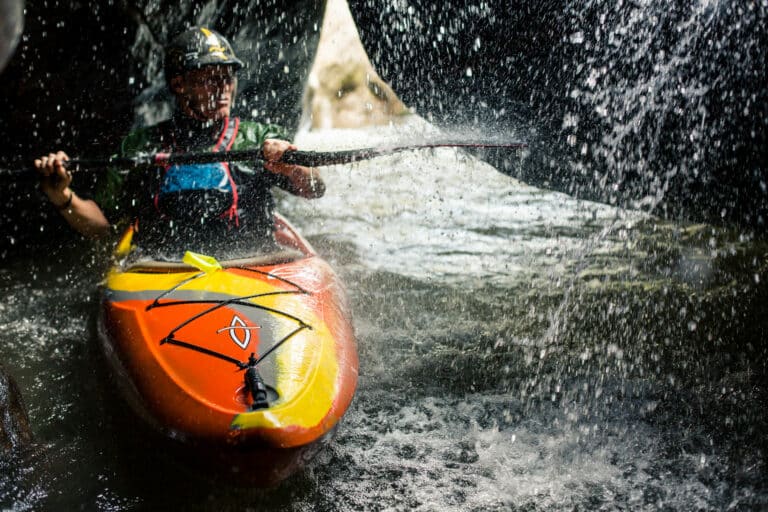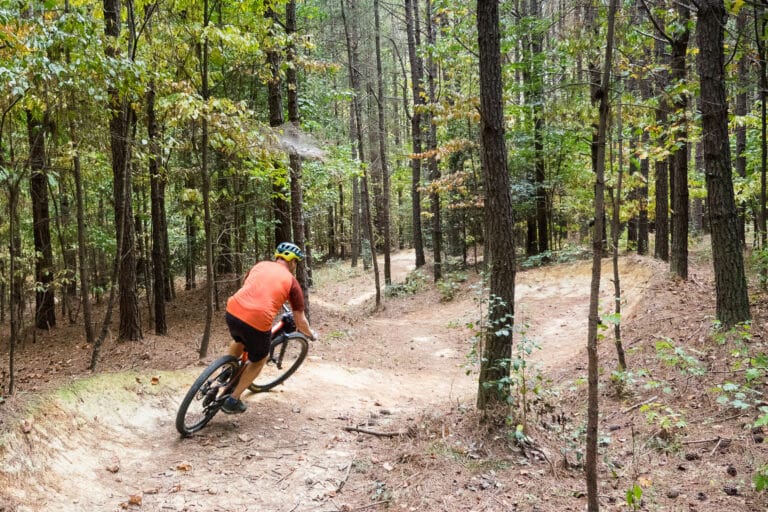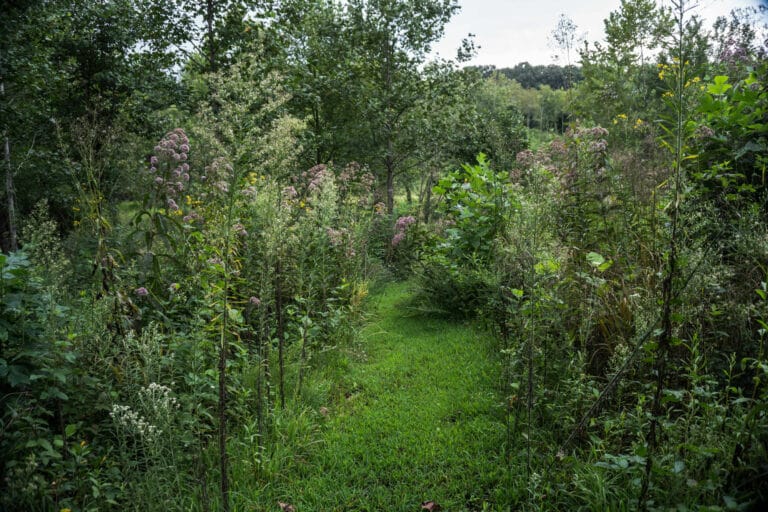BY GRAHAM AVERILL & JEDD FERRIS
Damn Puritans. They ruined everything by infecting America with their insane work ethic, now we’re stuck carrying the burden three centuries later. Americans may not wear the funny hats and stiff collars anymore, but we still believe work makes us better people. We work longer hours and take less vacation time than any other country with cable TV. Studies show the average American puts in one extra day of work a week by coming in early and leaving late, and we’re the only First World country that doesn’t have guaranteed vacation time mandated by law.
That’s just sick, and it can all be traced back to that damned Puritan Work Ethic. It’s time for a mini revolution. Tell your boss to shove it, take your hard-earned vacation days and head to the coast. Nothing says down with the Puritan Work Ethic like half-naked people, frozen daiquiris, and naps on the beach. And the ocean is the world’s largest wilderness playground, so while you’re sticking it to the man, you can sample some of the hottest coastal adventures the Southeast has to offer. From surfing in South Carolina to paddling the intercoastal waterways of Virginia, BRO’s got you covered with the beta that will help you make the most of your much-needed vacation.
<h4>SURFING: Folly Beach, S.C.</h4><br>
“There’s nothing else to do here. Surfing is it,” Alana Davis says as we scan the horizon for waves at the Folly Beach Pier. “And drinking. There’s lots of drinking.”
Davis is right. Surfing and drinking are definitely it on Folly Beach, a five-mile long island just off the coast of Charleston. The tiny town, which is roughly three blocks long and one block wide, sports two surf shops and four bars. Everything revolves around surfing in Folly. Even the restaurants post swell forecasts on their billboards.
By swell, I’m not talking about the skyscraper waves you see in surf documentaries. Folly has a more mellow break, usually in the two foot to four foot range. Perfect for part time surfers like me, and beginners looking to catch their first ride.
“A lot of people think you have to have huge waves to surf,” Davis says after giving me some pointers on my bottom turn. “But that’s not the case at all. A good two foot roller and a longboard and you can have a great time.”
Davis is one of the many Folly natives that’s caught in the catch 22 of the current rise in popularity for surfing in the Southeast. She makes her living giving surfing lessons, so she’s excited that so many people come to Folly wanting to learn how to surf. On the other hand, she’s a local surfer, so she’s bummed that so many people are coming to Folly to learn how to surf.
“Those didn’t used to be here,” she says, pointing to a huge block of vacation condominiums towering over the beach. “Tourism becomes more and more of a focus for Folly every year.”
Still, Folly is a fiercely independent town that cherishes its roots as a surfing community. There’s only one hotel on the island. There are no putt-putt courses or Ferris Wheels. Spend a couple days on Folly Beach and you get the feeling that this is one town that could successfully resist the invasion of a Starbucks.
And like Davis says, all that beach town stuff comes second in Folly. Surfing’s the thing here.
We’re surfing the pier in front of the Holiday Inn, the only hotel in town, because the Washout is too crowded. The Washout is a break about two miles north of town that hosts the best waves in the South. Cars line the streets near Washout and professional photographers take pictures of some of the best surfers in the Southeast. Locals call it “Hollywood.”
“On a weekend you won’t be able to find a spot in the lineup,” Davis says. And yes, the locals can get a little territorial. “But it’s not like out west where they’ll beat you up for dropping in. It’s just that it’s such a unique spot, and we all cherish it.”
After all, surfing is the only thing to do.
Directions: From Charleston, take SC 30 west to exit 3/SC 171. Take SC 171 toward James Island/Folly Beach and follow the road 9 miles.
Get Started: Mckevlin’s Surf Shop (www.mckevlins.com, 843-588-2247) will rent you soft or hard boards and get you set up with lessons. It’s the oldest and most respected surf shop in the area, and it’s a stone’s throw from the pier.
Good Eats: Snapper Jacks has $1.50 beers during happy hour and seafood nachos piled with everything good for $10.95. For the best meal in town, head to the Folly Crab Shack and get the Charleston Platter. Sure it’s fried, but you surfed all day, so you’ve earned it.
Shuteye: The Holiday Inn (www.charlestononthebeach.com) is pretty much the only game in town, and it can get pricey during the summer. Or you can camp at James Island County Park (843-795-7275) about 20 minutes from the beach.
<h4>SEA KAYAKING: Back Bay, VA.</h4><br>
It’s flat, easy, and peaceful, and that’s what I’m loving about it. It’s only my second time in a sea kayak, and I couldn’t have picked a better place to work out my sea legs. I’m paddling the waters of Back Bay, just a short drive from Virginia Beach, even though you would never know it from the secluded surroundings of the eponymous 8,000-acre seaside wildlife refuge. The landscape is open and exposed. Whites sand dunes on the long strip barrier island that sits between the bay and the Atlantic Ocean are patched with sea grass. The rolling, exposed dunes contrast nicely with the thicker maritime forests of its attached southern neighbor, False Cape State Park.
My guide for the day is the extremely affable Ed Schiller, director of the Wild River Outfitters Touring Company. The water is shallow and warm as Schiller and I put in at the refuge visitors center. I am hoping to catch a rare bird that takes sanctuary in the refuge like a peregrine falcon or a bald eagle. During the peak of fall migration, 10,000 snow geese and a large variety of ducks visit Back Bay.
One moment, I’m gazing skyward in search of birds; the next, my boat is upside down. Somehow, I managed to lean too far out of my boat and it capsized.
I should have gathered my composure, released my spay skirt, and smoothly swam out of the hull. Of course, I did exactly the opposite. Flailing like a flounder, I instinctively try to pop the boat upright, but with no rolling experience, I’m bobbing up and down like a buoy, gasping for air with each brief surface moment. Fortunately Schiller arrives quickly, and helps me pull myself upright using the bow of his boat.
“You okay to go on?” he asks.
Soggy and embarrassed, I nod.
Intent on avoiding another calamity, I focus on developing a steady rhythm. When I get my upper torso into a mode of cruise control, I take some time to absorb the scenery. It’s pin-drop quiet on the bay-one of the advantages of paddling on a weekday during calm early summer waters. Small marshland islands pop up sporadically, opening up to a maze of exploration. An otter pops his head up from one of the grassy banks, while an egret perches from another patch curtained by the tall blades-both seem completely unnerved by our presence. Later, Schiller points out a baby sea turtle-this area is home to the endangered loggerhead.
“That’s what I love about poking around these waters in a kayak,” says Schiller, who’s been leading trips at Wild River for six years. “It’s completely non-intrusive to these habitats.”
After just a half-day sampler, I can see the allure Schiller expresses. Finishing on the main island shoreline, it becomes apparent that this ecosystem is a rare treasure, where White Tailed deer and red fox are just as close as Ghost Crab and sand hills sit near pine trees. Later in the year these lands will evolve with the ocean’s fury, and new birds will come and go, but right now, like me, they’re just drying out, enjoying some peaceful down time.
Get Started: Wild River Outfitters (www.wildriveroutfitters.com, 757-431-8566) in Virginia Beach leads trips on Back Bay and many of the other 120 miles of paddle-friendly waterways off Virginia’s eastern shore. If you want head to out on your own, Back Bay National Wildlife Refuge (www.fws.gov/backbay) is located near Virginia Beach, just south of Sandbridge.
Good Eats: After a day on the water head over to BluePete’s (www.bluepetes.com) in Sandbridge for some amazing seafood and don’t forget to try the sweet potato bread.
Shuteye: Campgrounds are only available at False Cape State Park, which is only accessible by foot or bike.
Camping options include six sites on the ocean and six sites on the bay (800-933-PARK).
<h4>SURF KAYAKING: Nags Head, N.C.</h4><br>
Surf kayaking is exactly what it sounds like: surfing in the ocean with a kayak. Some paddlers use their river play boats in the breaks and do just fine. I’m paddling a hybrid sit-on-top kayak with a flat bottom and curved nose. It’s exactly what you get when you cross a surfboard with a kayak, and my guide and instructor for the day, Lindsay Usher, assures me it will handle the waves like a short board out on the green.
“The green” is the sweet spot of the wave. It’s the baTAILSg, dark face just ahead of the break. If you’re lucky enough to get in the green, you’re set for one of the most exhilarating experiences of your life, whether you’re on a surfboard or kayak.
I paddle into my first wave and catch it with ease, but spend the majority of the ride in the whitewash-the bubbling white water that dominates the wave just after it breaks. It’s fun, and for my first ride on a kayak, it’s a rush, but I can tell there’s more to surf kayaking than riding the whitewash. I can tell that the juice lies in the green.
Unlike surfing or river kayaking, surf kayaking is accessible to everyone. You don’t have to learn any technical skills like how to roll your kayak.
“Just about anyone can come out here on a stable sit-on-top kayak and catch waves all day, and it’s a great way to enjoy the ocean,” says Usher. “But truly riding a wave well can take years of experience.”
And even when you mess up, the true beauty of the Outer Banks is that there’s always another set of waves on the horizon. Most surfers say the Banks have the biggest, most consistent waves on the East Coast, which means newbies like myself can get more time in the water than at any other beach facing east.
It also means we can get in over our heads. Later that day, I paddle into a wave much larger than I should have. The nose of my kayak sinks into the water and I go in head first. This is called pearling, and it’s not pleasant.
So I take a rest and watch a longboarder ride the shoulder of a decent sized wave. When he’s done, I ask Usher if she’s ever contemplated crossing over to a surfboard, but she just shrugs. “My dad’s a surfer and he’s always trying to get me to cross over. But I don’t need to. I get the same feeling, the same sense of exhilaration from surfing a kayak. Being in the green is being in the green, whether you’re on a board, or in a boat.”
Directions: From Raleigh, take U.S. 64 East for three hours until you dead end into Nags Head.
Best Breaks: Pea Island, Oregon Inlet, Cape Hatteras, and Duck all have legendary breaks. If you’re a beginner, try any public beach access along Nags Head Beach.
Get Started: Kitty Hawk Sports (www.kittyhawksports.com, 252-441-6800) is the end-all-be-all of surf kayaking. They’ll put you on a stable but surfable sit on top and set you up with lessons from a National Surf Kayak Team member who will get you in the green quicker than you can say “Gidget’s got a small bikini.”
Good Eats: Try RV’s (252-441-4963) for a great plate of shrimp, flounder, and scallops on the Sound. For a truly unique meal, head to Sooey’s BBQ (252-449-6465) on the Beach Road near the Nag’s Head Pier.
Shuteye: Take your pick of ‘60s style hotels and motels throughout Nags Head and the OBX, but be warned: some have seen better days. If you have to be on the beach, try the Colonial Inn Hotel (www.colonialinnmotel.com, 252-473-2434). You can’t go wrong with Oregon Inlet Campground (252-473-2111), where you can pitch your tent amongst the dunes for only $20.
<h4>DUNE GLIDING: Jockey’s Ridge, N.C.</h4><br>
I’m standing atop a steep, 200-foot dune overlooking the Atlantic Ocean, preparing to take flight with a pair of man-made wings.
I’m about to take my first hang gliding lesson with Kitty Hawk Kites, the world’s largest hang gliding school. It has taught more than 300,000 students since 1974 (I find this resume to be one of my only sources of comfort prior to take off). We’re launching from the dunes at Jockey’s Ridge State Park, home of the tallest active sand dune system in the Eastern United States, located in the town of Nags Head in North Carolina’s Outer Banks.
Although the park is a quick drive from the stilted summer homes and strips of Wings gift shops, it carries an aura of pristine isolation beyond your normal beachside escape. Credit that to the dunes, which have a movie-set set grandeur, making all of the little kids playing on the slopes with sand pales look like microdots. In the backdrop, maritime thicket springs up from the sand hill shelter. Patches of live oaks and wax myrtle border the steep rolling white coast.
The peaks of the dunes are constantly changing, thanks to back-and-forth northeast and southeast winds. It is those winds that will send me airborne today. My guide, Kevin Coltrane, says we are working with nearly perfect conditions, as the glider needs a 15 mile-per-hour push to get off the ground. With 10 mile-per-hour winds, it requires just an average running start to launch off the dunes.
I’m getting ready for my first run, suiting up in a torso-length harness, laced on the back with an industrial-strength carabiner that will hang me from the glider. I move under the glider between an A-frame of metal bars, the lower of which has a set of wagon wheels that will assist with my landing in case I can’t glide smoothly to my feet.
While the concept of getting off the ground is quite scary, the process of flying a glider is actually simple, mainly because the glider does all of the work. I stand up and hoist over me what’s essentially just a large kite with a wingspan about four or five times that of my own. Coltrane reminds me of the basic principles.
The key is to be loose and just go with the glider. Holding on to the bar too tight or jerking it will cause the glider to abruptly tank into the ground. My job is to keep my hands loose and keep my eye fixed on my target, which in this case is a bush of beach grass off in the distance. If the glider starts to deviate, all I have to do is move my swinging body the way I want the glider to go and it will get back on track. Sounds pretty simple, but with the first-time nerves and thoughts of imminent bodily injury, my heart is leaping out of my chest.
Coltrane will be running alongside me, with a long leash attached to the glider. There is no turning back now. I start to run down the side of the dune. No more than five steps later my feet are still kicking but solid ground is beneath me. I can feel my heart pounding as I’m gently floating with the wind current. This is the real deal. I’m not at an amusement park with any assurance of safety. I’m actually flying a hang glider.
The 10 seconds I’m in the air are fluid and smooth, but as the ground gets close it’s suddenly time to land. Coltrane suddenly yells, “Push!”
I thrust my body behind the bar and the glider points up, jolting into a quick stall. Although it’s how it’s supposed to happen, I’m surprised when my feet gracefully land in the soft sand. I hear applause from the other newbies back up the hill waiting for their turns at air glory. Coltrane meets me with a hard handshake and a big ‘Woohoo!’
“Now you know what it’s like to fly,” he says.
Directions: Jockey’s Ridge State Park is located in the town of Nags Head at milepost 12 on the Hwy 158 Bypass (South Croatan Hwy).
Get Started: Lessons are available by reservation with Kitty Hawk Kites (www.kittyhawk.com). A beginner dune lesson, which lasts about three hours and includes ground school and up to five solo flights, costs $89.
Good Eats: If you’re hungry after landing, check out the catch of the day at the Black Pelican Oceanfront Café at milepost 4. For a quicker bite, head to Beach Bread Co. for gourmet sandwiches, baked goods, and great coffee.
Shuteye: It’s worth a little extra coin ($175 per night) to sleep at the rustic Cypress Moon Inn located on the sound. Looking to sleep under the stars? Adventure Bound Campground is a tent-only ground located on the edge of the Kitty Hawk Maritime Forest.•







